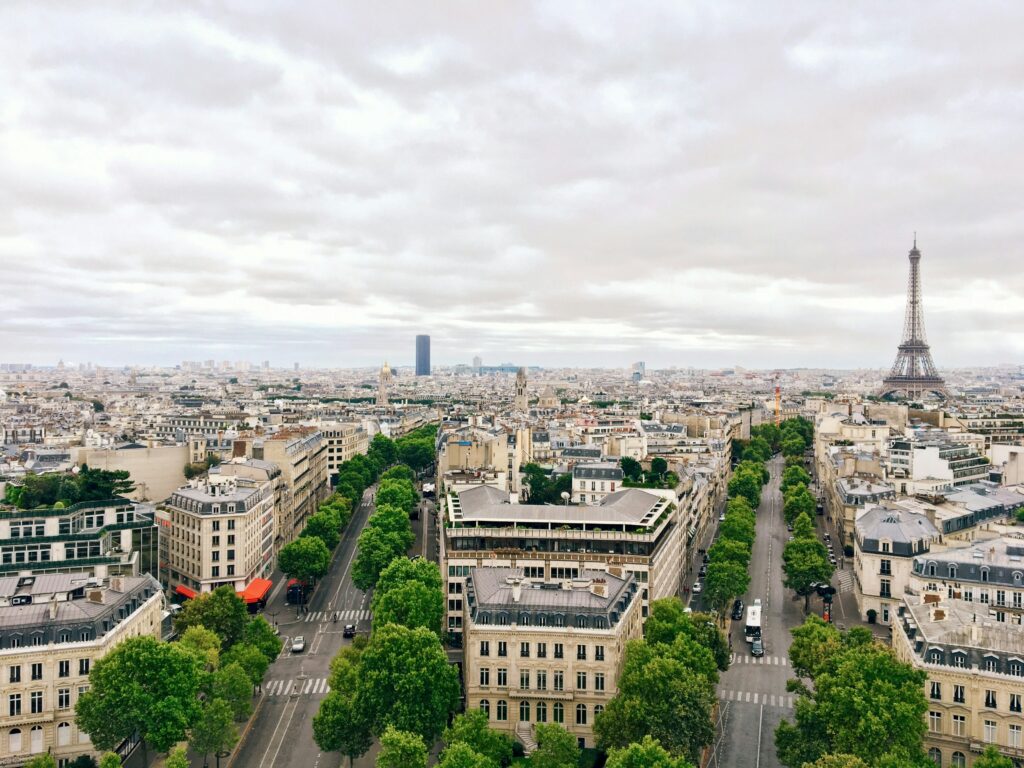
Neighborhoods
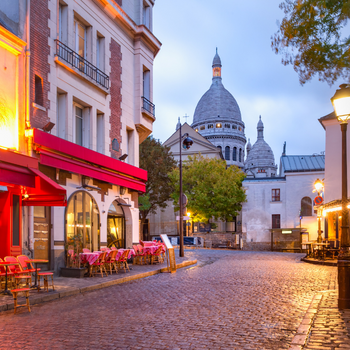
Montmartre
Touristic Guide:
Let’s have a walk through the most colorful, artistic and animated of the parisian neighbourhoods. Its origins take us to roman times where temples dedicated to Mercury and Mars were built. This is how the hill turned into a religious site increasing its status even more with the martyr of Saint Denis, patron and first bishop of Paris.
This created a popular and important pilgrimage. Significant figures such as Thomas Becket, Joan of Arc and Ignacio de Loyola climbed up the hill to pray in such miraculous lands. We have to imagine that the hill was once covered with windmills, convents and vineyards only two surviving today.
During the 19th century artists made it their home where they found inspiration but also a cheaper rent.
Outside the city limits, wine was also exempt from taxes turning this area into a bohemian hive. Cabarets, guinguettes and cafés attracted rich and poor, aristocrats, artists and intellectuals, some experienced a revolutionary and sexy dance while others found inspiration for their canvas.
They revolutionized art history by introducing modernity and scandals.
Duration : 2h
Meeting Point Touristic Guide : Place des Abbesses
Rate : by mail

Le Marais
Touristic Guide : Being the oldest and most cosmopolitan district in Paris, Le Marais which means “swamp”, became the residence of great personalities. In the 13th century the “Order of the Temple” and many other religious institutions settled down here.
From that time to the 17th century, nobles also came along. Its mansions made of this area the most fashionable one in the capital. But its golden ages were interrupted first of all by the departure of Louis XIV from Paris to Versailles in 1682 along with the nobility The abandoned mansions were thus transformed into small industries obliterating the beauty of its classic French architecture.
In the early 20th century, Le Marais became more popular when Jewish communities coming from Eastern Europe, mainly as a result of Russian pogroms, made it their home. Much of this past can still be seen.
Duration : approximately 2h
Meeting Point Touristic Guide : at the exit of line underground 1 Saint Paul
Rate : by mail
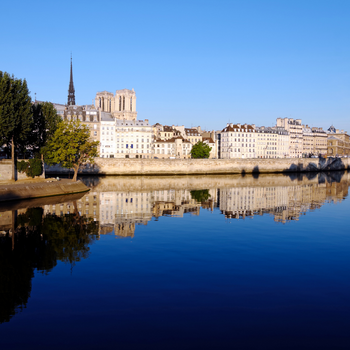
L’île de la Cité
Let us guide you in the historic heart of Paris with a touristic Guide !
L’île de la Cité, together with l’île St Louis, is one of the two natural islands of the Seine. It was on this islet that the first tribes, the people of the Parisìì, attacked themselves. Then, from the Romans until the fifteenth century, it was the center of temporal power with the construction of the Conciergerie and of spiritual power with the construction of the Notre Dame Cathedral.
Declared a World Heritage Site by UNESCO, the Ile de la Cité preserves its most beautiful monuments, forming the largest Gothic, religious and civil architectural complex in France. This circuit will make you discover must-sees such as the Conciergerie, the Sainte-chapelle and the Notre-Dame Cathedral, immortalized by the famous novel by Victor Hugo.
This visit is strongly recommended to all those who wish to have a first approach to the capital. How not to resist the charm of the secret place Dauphine? There, under the shade of large trees, at number 15 you will meet the ancient residence of Simone Signoret and Yves Montand.
Duration : 2h
Meeting Point Touristic Guide : in front of the Hôtel de Ville , exit avenue Victoria
Rate : by mail
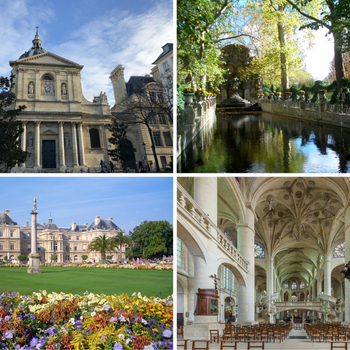
Latin Quartier
From the Gallo-Roman era, there is not much left, apart from the Arènes de Lutèce built during the 1st century AD and the remains of the thermal baths of Cluny, which were ignored for fifteen years, they were rediscovered in 1869 during the works of Haussmann.
The reputation of the district began in the 13th century with the birth of the prestigious Sorbonne created in 1253 by the theologian Robert de Sorbon. Made up mostly of students, the district owes its name to the Latin language courses that were given there from the middle ages.
The area is full of historic sites from all eras. During this walk, we will cross the centuries evoking the glorious past of the Gallo-Roman era, we will climb the Sainte-Geneviève mountain to admire the Pantheon in a neo-classical style and the magnificent church of St-Etienne-du- Mount where you can admire the only rood screen still existing in Paris.
And to say that before the construction of the Eiffel Tower, the Pantheon was the tallest monument in Paris.
The visit will also be an opportunity to evoke its famous colleges which have attracted intellectuals from all over the world and to stroll in the charming little streets such as rue de la Huchette, rue de la Harpe, rue du Chat-qui-Pêche …
We will end our walk with the magnificent Luxembourg garden, desired by the Queen of France Marie De Médicis in 1612. Today, the garden houses the Senate.
Duration : about 2h
Meeting Point Touristic Guide : in front of the fountain in Place Saint-Michel
Rate : bt mail
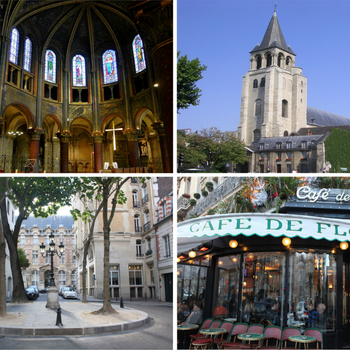
Saint-Germain-des-Prés
Its birth dates back to the 6th century when the king Childebert decided to found an abbey, one of the richest in France. Unfortunately during the French Revolution, its cloister was used as a saltpetre deposit and an explosion destroyed most of it only the church was spared.
It became an intellectual epicenter when theater troops came to perform to its famous fair during the middle ages. From the 17th thanks to the opening of “La Comedie Francaise”, cafés started popping up to offer a very exotic drink and a place to gather. Thus actors, writers, encyclopedists, philosophers, humanists came to discuss ideas in complete opposition to an absolute monarchy being Voltaire one of the main leading figures.
Strolling around this area means to come across many plaques on buildings where celebrities lived or met. George Sand, Oscar Wilde, Honoré de Balzac, Champollion , Voltaire, Charles Baudelaire, Eugénie Delacroix, Ingres, Borian Vian, Jacques Prévert, Picasso, Serge Gainsbourg, Richard Wagner, Marguerite Dumas, Guillaume Apollinaire, Louis Aragon, Ernest Hemingway, James Joyce, Albert Camus, Pablo Picasso, Alberto Giacometti, Marguerite Duras, Jean-Paul Sartre, Simone de Beauvoir, among many others.
Most of them get together in ‘Les Deux Magots’ or the ‘Café de Flore’ and even today you might be able to glimpse a few personalities.
Duration : 2h
Meeting Point Touristic Guide : in front of St Germain’s Church
Rate : by mail
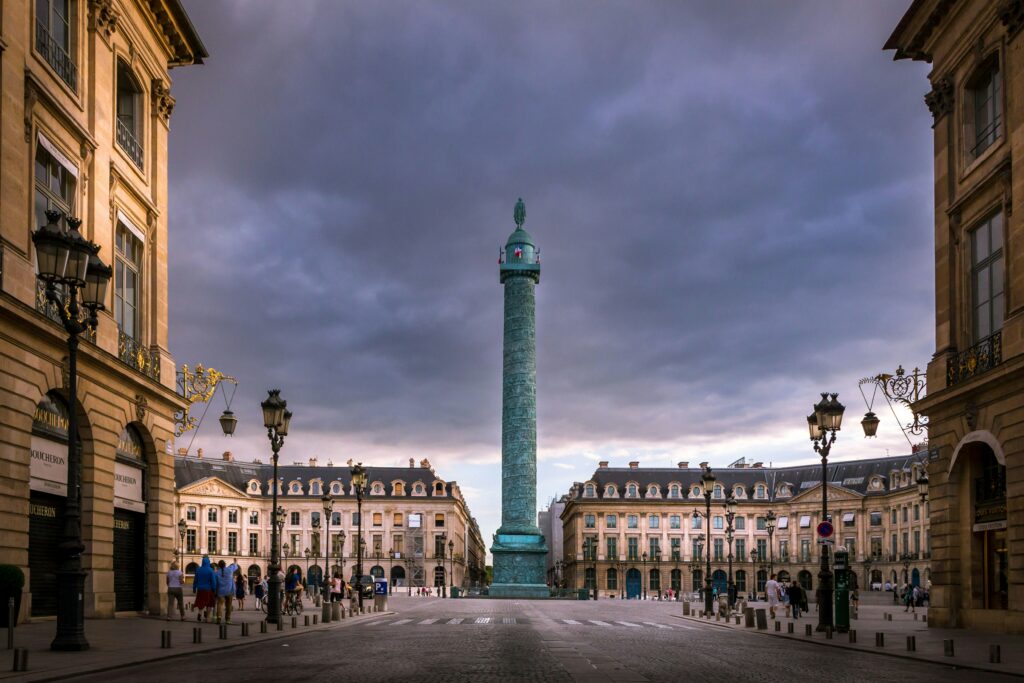
Modern Paris
The guided tour of Modern Paris is a tour intended to explain the architectural and civil evolution of the City of Light from the 19th century.
At this historic moment, the French capital becomes a human and citizen scenario between technical evolution and the desire for stability.
The French Revolution still left traces of political and social effervescence while the Bonaparte family had concretely restored imperial power with the military exploits of Napoleon I.
From the mid-1800s, Napoleon III ascended the throne and planned a complete change of Paris; under the direction of Baron Haussmann, a senior political official of the State, the plan of the city changed radically.
We are witnessing the transition from a still medieval urban organization to a geometric and linear vision which materialized in the opening of spaces and in the exaltation of the great monuments of the city.
The Guided Tour “Modern Paris” takes place in a very interesting route between history, anecdotes, modern art and urban marvels.
The meeting will take place in front of the Opéra Garnier, symbol of Napoleonic power and seat of the National Academy of Classical Music and Dance. The walk develops in the charming alleys of the La Fayette galleries, rue de la Paix, rue Saint-Honoré where you can admire the Parisian economic renaissance through the elegance of the palaces and the many windows of the great French houses.
The visit continues on a more historical side with the explanation of monuments such as the Column of Austerlitz located in the center of Place Vendôme, Place de la Concorde and the Egyptian obelisk of Luxor which stands in the space which was , at the time of the Revolution, the “square of the guillotine”.
Duration : 2h
Meeting point Touristic Guide : 8 rue du scribe
Rate : by mail
CONTACT
MENTIONS LÉGALES
Privacy and policy

